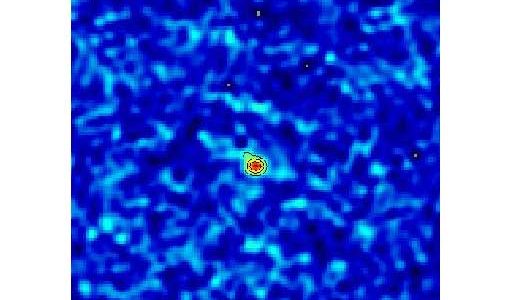Latest NRAO News
News is managed by NRAO News & Public Information. Questions about News? Have a story to share? Want to interview a scientist or create new media about our telescopes?

A team of astronomers has revealed tantalizing new information about the explosions of massive stars, the workings of galaxies with supermassive black holes at their centers, and clusters of galaxies.

A superfast jet of subatomic particles presumably powered by the gravitational energy of a black hole has collided with nearby material, been slowed dramatically and released much of its energy in the collision, radio astronomers report.

Astronomers using radio telescopes in New Mexico and California have discovered a giant, rotating disk of material around a young, massive star, indicating that very massive stars as well as those closer to the size of the Sun may be circled by disks from which planets are thought to form.

Researchers using the National Science Foundation’s Very Large Array radio telescope have imaged a spectacular and complex structure in a galaxy 50 million light-years away.

Astronomers using the National Science Foundation’s Very Large Array radio telescope have found previously unseen evidence that galaxy collisions trigger energetic quasar activity in relatively nearby galaxies.

Scientists and engineers at the National Radio Astronomy Observatory (NRAO) have made a giant leap toward the future of radio astronomy by successfully utilizing the Very Large Array (VLA) radio telescope in conjunction with an antenna of the continent-wide Very Long Baseline Array (VLBA) using the longest fiber-optic data link ever demonstrated in radio astronomy.

The smallest protoplanetary disk ever seen rotating around a young star has been detected by an international team of astronomers using the National Science Foundation’s Very Large Array radio telescope.

Astronomers have found evidence for the most powerful magnetic field ever seen in the universe. They found it by observing a long-sought, short-lived afterglow of subatomic particles ejected from a magnetar — a neutron star with a magnetic field billions of times stronger than any on Earth and 100 times stronger than any other previously known in the Universe.

Planets apparently can form in many more binary-star systems than previously thought, according to astronomers who used the National Science Foundation’s Very Large Array radio telescope to image protoplanetary disks around a close pair of stars.

Radio telescope studies of the fiery afterglow of a Gamma Ray Burst have provided astronomers with the best clues yet about the origins of these tremendous cosmic cataclysms since their discovery more than 30 years ago.





